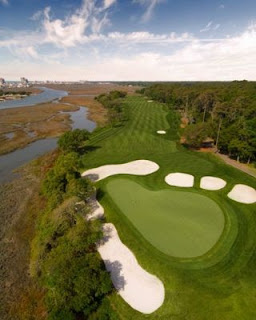Golf originated from a game played on the eastern coast of Scotland in the Kingdom of Fife during the 15th century. Players would hit a pebble around a course of sand dunes, and tracks using a stick or primitive club. No one knows the actual origin of golf or the first inventor; we just know that it was first played by the Scottish.
The first real record of a club maker was recorded in 1603.These club makers were said to be skilled craftsmen who produced bows and arrows and other implements of war! These clubs featured carved wooden heads of beech, holly, dogwood, pear or apple and spliced into shafts of ash or hazel to give the club more whip. The clubs were improved by filling the back of the head with lead and by putting inserts of leather, horn or bone into the club face.
The earliest balls were hand stitched leather, stuffed with boiled feathers! The first balls were smooth however the players soon found out that balls flew farther after being scarred and worn out. Therefore players started to pit the balls themselves and eventually the dimpled ball we use today was invented in 1905
For many years the game was played on rough terrain without proper greens, just crude holes cut into the ground where the surface was flat! Now days we play on different surface levels of grass with proper greens and 18 holes. The first 18 hole golf course in America was located on a sheep farm in Downers Grove, Illinois in 1892.




